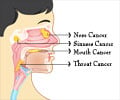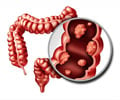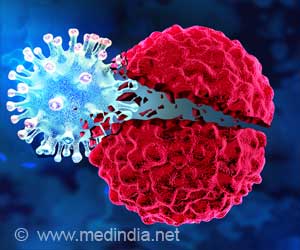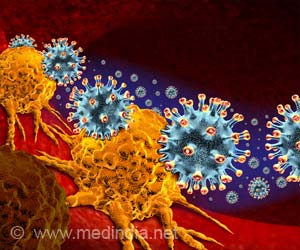Cancer cells don't die when they're supposed to, they escape programmed cell death, called apoptosis, and multiply uncontrollably.

‘Cancer cells don't die when they're supposed to, they escape programmed cell death, called apoptosis, and multiply uncontrollably.’





"There are mechanisms that eliminate mutated cells, normally," says Chigaev. "But one of the ways that cancer cells survive is that those mechanisms break." In studying cellular systems, Chigaev and his team discovered a process that leukemia cells use to expel a molecule that could be toxic and that starts apoptosis. Normal blood cells don't have the cellular machinery for this process. All cells produce a molecule called cyclic adenosine monophosphate, or cyclic AMP, through normal cellular processes. If it builds up, cyclic AMP can harm the cell, so the cell converts it to a nontoxic form. Most normal cells can maintain low levels of cyclic AMP because their conversion system can keep up. If too much cyclic AMP piles up, though, the apoptosis process starts and the cell dies.
The Chigaev team was studying another molecule called VLA-4. It is an adhesion molecule that works like glue to keep each cell in its proper place, called its niche. The team discovered that cyclic AMP reduces VLA-4's stickiness, allowing cells to detach and wander when they shouldn't. "That's how we stumbled upon it," says Chigaev. "Cyclic AMP reduces cell adhesion and maybe that's one of the mechanisms by which leukemic cells leave bone marrow niches." The team also confirmed other scientists' findings that cyclic AMP starts apoptosis in leukemia cells.
So the team studied cyclic AMP's effect on leukemia cells and discovered that leukemia cells could pump the molecule out. But when they loaded cyclic AMP into normal blood cells, the cyclic AMP remained inside. The team confirmed their model by testing several different drugs that block leukemia cells' ability to pump cyclic AMP out. The drugs, all approved by the Food and Drug Administration, are used to fight malaria and fungal infections. They disable the cellular machinery that leukemia cells have to pump out cyclic AMP. When that machinery is disabled, the leukemia cells died. Because normal cells don't have such machinery, the drugs had no effect on them.
"This particular mechanism of action has not been reported for these drugs," says Chigaev. "And the idea that cells can have this apoptotic escape, or apoptotic evasion, through cyclic AMP pumping, that's new. It's never been reported previously."
Advertisement
Source-Newswise















